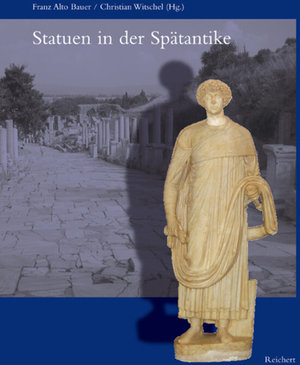
Statuen in der Spätantike
The investigation of late antique statuary lies at the intersection of various scholarly disciplines studying the ancient world. Late-antique statues are an example of a slowly dying genre, i.e. sculpture in the round, to which particular importance is attached, perhaps precisely because fewer and fewer such statues were being made. Statues set up in public are an important index of the continuity of civic practices in Late Antiquity; statues in the private sphere demonstrate the longevity of classical mythological themes during the transition to the Middle Ages. The intellectual quality of inscriptions on statue bases confirms the general picture of an elite that rejoiced in education, while the mutilation and destruction of portraits simultaneously attest to a fear of statues.
These are only a few aspects of the significance and differing understandings of statuary in Late Antiquity that are discussed by archaeologists, historians, and art historians in this volume. In the process, questions not just of the chronology of statues and the formation of statue-collections, but also of contextualization in both the private and the public spheres are addressed. Particular attention is paid to the reasons for the end of the production of statues, and to the question of which forms of representation took their place.
With contributions by Johanna Auinger ∙ Sarah Bassett ∙ Franz Alto Bauer ∙ Marianne Bergmann ∙ Barbara E. Borg ∙ Robert Coates-Stephens ∙ Niels Hannestad ∙ Susanne Muth ∙ Elisabeth Rathmayr ∙ R. R. R. Smith ∙ Peter Stewart ∙ Lea Stirling ∙ Christian Witschel
Die Erforschung statuarischer Bildwerke steht im Schnittpunkt verschiedener altertumswissenschaftlicher Disziplinen, und dies gilt insbesondere für spätantike Skulpturen: Sie sind Zeugnisse einer allmählich auslaufenden Kunstgattung, der Vollplastik, denen – vielleicht gerade infolge nachlassender Produktion – besondere Bedeutung beigemessen wird. Statuen, die im öffentlichen Raum aufgestellt waren, bilden einen wichtigen Gradmesser für die Kontinuität städtischer Ausstattungspraxis in der Spätantike. Sie belegen, sofern es sich um Bildwerke im privaten Lebensbereich handelt, die Langlebigkeit klassisch-mythologischer Sujets am Übergang zum Mittelalter. Die Inschriften auf Statuenbasen wiederum entwerfen in ihrer Intellektualität das Bild einer bildungsfreudigen Oberschicht, während gerade Verstümmelungen und Zerstörungen von Bildnissen die Furcht vor Statuen bezeugen.
Damit sind nur einige wenige Aspekte der Bedeutung und verschiedenartigen Wahrnehmung von Bildwerken in der Spätantike genannt, die in dem vorliegenden Band aus verschiedenen Blickwinkeln von Archäologen, Historikern und Kunsthistorikern thematisiert werden. Dabei werden am Beispiel ausgewählter Befunde und Kontexte nicht nur Probleme der Chronologie und der Entstehung von Statuensammlungen thematisiert, sondern auch Fragen der Kontextualisierung sowohl im privaten wie im öffentlichen Raum behandelt. Besonderes Augenmerk gilt der Frage nach den Gründen für das Ende der Statuenproduktion und welche Repräsentationsformen an die Stelle der Statuenausstattung traten.






